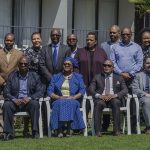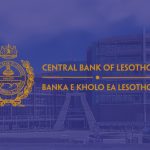
The Lesotho Money Month Campaign Launched
October 1, 2018
Press Conference on Forex Trading, 24 December 2018
December 24, 2018The Central Bank of Lesotho Monetary Policy Committee (MPC) held its 74th meeting on the 27th November 2018. The Committee considered international, regional and domestic economic developments and financial markets’ conditions, in order to determine appropriate monetary policy action to maintain price stability.
The global growth is projected to remain broadly favourable in the short term, but has become less balanced. Global growth is projected at 3.7 per cent for 2018 and 2019. Downside risks to the outlook have risen, including policy uncertainty arising from escalating trade tensions, tightening global financial conditions, higher oil prices and rising geo-political tensions, as well as weaker outlook for some key emerging market and developing economies arising from country specific factors. These factors may impact negatively on growth prospects and lead to capital flight, rising financing costs and exchange rate pressures in emerging market and developing economies, with adverse implications for Lesotho’s economy.
Global inflation has maintained a moderate upward trend, with output in some of the major advanced economies growing at a strong pace. However, monetary policy stance in most advanced economies remained unchanged at the beginning of the fourth quarter, with the exception of the US and UK, in which policy rates were raised by 25 basis points. Among the key emerging market economies, policy rates were increased in India and South Africa, while they remained unchanged in the rest.
Economic activity in South Africa remains weak, with a challenging outlook. Recent monthly data suggests slower growth recovery, pointing to a wider negative output gap, than previously expected. The rate of unemployment remains elevated at 27.5 per cent in the quarter ending September 2018. The annual rate of headline inflation, measured by changes in consumer price index (CPI) for all urban areas, rose to 5.1 per cent in October, from 4.9 per cent in September 2018.
On the domestic front, indications are that economic activity improved during the third quarter of 2018. Based on the CBL measure of economic activity, output increased by 0.5 per cent in the quarter ending September 2018, compared with a decrease of 0.3 per cent in the second quarter. The modest recovery was supported mainly by the manufacturing sector. In addition, employment by the LNDC-assisted firms grew by 4.4 per cent on an annual basis. In contrast, the number of Basotho migrant workers in the South African mining industry has maintained a downward trend.
The annual rate of inflation, measured by the change in the CPI for all items, increased from 5.0 per cent in September to 5.3 per cent in October 2018. The main contributors to the increase were “housing, electricity, gas other fuels” and “transport” on the back of increases in the international oil prices. However, the rate of inflation for the “food and non-alcoholic beverages”, which accounts for the largest weight in the consumer price basket, has remained unchanged at 4.7 per cent between September and October.
The broad measure of money supply (M2) increased by 6.9 per cent during the third quarter of 2018, compared to a decline of 2.4 per cent in the previous quarter. The increase in M2 was driven by growth in both domestic claims and net foreign assets of the banking system. Private sector credit maintained a strong upward trend, underpinned by robust growth in credit to business enterprises, which grew by 5.3 per cent during the review period, following growth of 5.9 per cent in the quarter to June 2018. In contrast, credit extended to households slowed to 1.7 per cent, from 2.1 per cent in the previous quarter.
The external sector position deteriorated slightly, with the surplus on the overall balance of payments declining to 5.7 per cent of gross domestic product (GDP) in
the review period, from 7.0 per cent of GDP in the second quarter. However, gross international reserves were registered at 4.3 months of import cover in the quarter ending in September, compared with 4.2 months in June 2018, on account of a decline in imports.
Preliminary indications are that the government budgetary operations have resulted in a fiscal deficit equivalent to 4.1 per cent of GDP during the quarter ending September 2018. This compared with a revised surplus estimated at 11.7 per cent of GDP in the previous quarter. The deficit was financed by a reduction in government deposits and issuance of a treasury bond. Given Lesotho’s fixed exchange rate system under the Common Monetary Area (CMA), a healthy fiscal position is essential to support maintenance of adequate international reserves that is necessary to bolster the exchange rate parity.
In summary, the Committee noted that, while global growth outlook remained favourable, downside risks have remained a concern. The committee further noted sluggish domestic economic activity, tight fiscal conditions, upward inflationary pressures and negative spill-overs from South African economic activity as major risks.
Having considered the above developments, the MPC decided to:
1) Keep the NIR target floor unchanged at US$690 million.
2) Increase the CBL rate from 6.50 per cent to 6.75 per cent per annum.
The Committee will continue to monitor the global developments and their likely impact on domestic macroeconomic conditions, especially the CBL net international reserves (NIR), with the aim of taking corrective action when needed.
A.R. Matlanyane (PhD)
GOVERNOR
Contact Person
Ephraim Moremoholo
+266 22232094
emoremoholo@centralbank.org.ls

